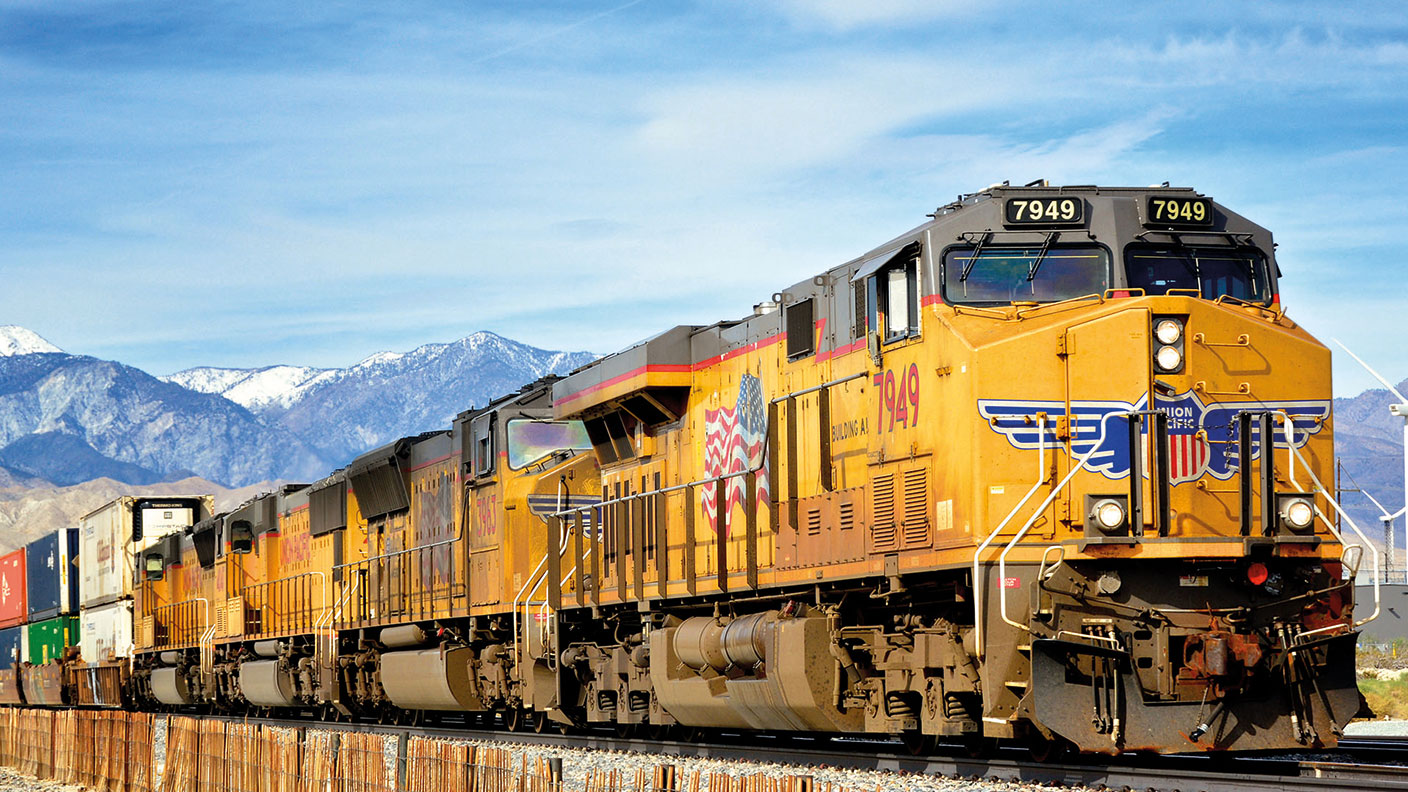Back on track: why you should invest in railways
Rail transport suffered a severe blow in the pandemic. But while post-Covid-19 working patterns may reduce revenue, trends in technology, long-distance travel and freight all bode well, says Matthew Partridge


Rail transport has had a dismal 18 months, especially in Britain. Rail traffic plunged during lockdown as people stopped going out and started to work from home rather than commute. According to the Department for Transport, while road usage bottomed out within weeks of the first lockdown and had returned to near-normal levels by July 2020, even by early May 2020 rail usage was as low as 4% of typical levels. It then climbed and peaked at 43% in October, before falling back during the second and third lockdowns. Even today it is still 33% below pre-crisis usage.
However, it’s not all doom and gloom. While Covid-19 may have brought forward permanent changes in the way we live, work and communicate, there are signs of a return to the office. And in any case, railways don’t depend solely on people’s working patterns.
Governments are keen for people to use the train for long-haul journeys that they would currently take by car or aeroplane. Finally, rail freight, which accounts for a large part of the overall industry’s revenue, has been largely unaffected by lockdowns and is looking increasingly attractive compared with road haulage. There are plenty of opportunities in this sector for the savvy investor.
MoneyWeek
Subscribe to MoneyWeek today and get your first six magazine issues absolutely FREE

Sign up to Money Morning
Don't miss the latest investment and personal finances news, market analysis, plus money-saving tips with our free twice-daily newsletter
Don't miss the latest investment and personal finances news, market analysis, plus money-saving tips with our free twice-daily newsletter
A permanent shift in commuting patterns?
Transport expert Christian Wolmar has been a railway enthusiast all his life. He believes that passenger rail, especially within cities, “is unlikely to return to pre-Covid-19 levels” even after concern over the pandemic has died down.
While “around half of commuter journeys will return, around 30%-40% are gone for good”, he says, with Zoom and the working from home revolution “proving to be a game changer”. Even more modest changes, “such as half of all commuters working for three days a week, rather than five”, could still reduce revenue significantly.
Some of this decline in passenger numbers could be offset by a “shift from commuting to leisure”, with people working at home during the day and then taking the train into city centres. However, he cautions that even leisure travel could be affected by changes in technology.
For example, “if university students have got used to ‘Facetiming’ their parents during the time when they were locked down in halls, then they may not feel the need to travel back home as often, even though they are now free to do so”.
Nevertheless, the industry could be saved by the fact that it is a key part of government plans to reduce carbon emissions and congestion. The peculiar economics of rail travel, with high fixed costs in terms of track, signals and rolling stock, but relatively low variable costs (mostly staff and electricity) for each individual train journey, could also work in its favour.
Normally such a combination would be bad news for an industry suffering from reduced demand, as the money saved from reductions in services wouldn’t be enough to cover the lost revenue. However, the fact that cutting back on the frequency of services “won’t save all that much money” also means that there is more scope for the government to keep subsidising frequent services on existing infrastructure.
It looks as though “governments are still committed to rail transport as countries around the world have poured in money to shore up their train systems”, says Jerry Thomas, head of global equities at Sarasin & Partners. The UK has upped spending, while Germany bolstered rail subsidies by €2.5bn this summer. Thomas also notes that President Joe Biden, who regularly commutes from his home in Delaware, is a “big fan” of rail transport and has allocated $66bn of his various spending packages to the railways. This support means that, at least in the short run, “absolute levels of passenger number are less important than you might think”.
Thomas accepts that governments are unlikely to subsidise commuter railways indefinitely if demand falls substantially. However, he is relatively bullish about the return to the office as, at the end of the day, “people need to get on with their lives”. For example, he notes that in the City of London, around 70%-80% of people who previously worked in offices have returned. In early October, tube passenger numbers briefly hit 83% of their pre-crisis level. He also notes that pre-Covid-19 demand was so high that the system “was creaking at its seams”.
Long-distance, high-speed rail will flourish
While the outlook for commuting appears inauspicious, longer rail journeys are less threatened, says Wolmar. Governments are eager to cut carbon emissions by persuading people to switch from cars and aeroplanes to trains. Combined with the “strong lobby” behind individual projects, this should ensure that investment in high-speed rail continues.
One sign that there is still an appetite for high-speed rail is that the government remains committed to the controversial High Speed 2 (HS2) project, although ministers have recently hinted that parts of the project may be scaled back. HS2’s survival despite spiralling costs is partly due to the fact that so many contracts have been signed and so much preparatory work done that it “has probably passed the point of no return”. The project is also considered central to the government’s “levelling up” programme.
The UK isn’t alone in putting large sums of money into high-speed rail. The EU has made investment in the subsector a key part of the Green New Deal that it has agreed with member countries, setting itself the target of doubling high-speed traffic by 2030 and tripling it by 2050. China is also continuing to invest in high-speed projects, although perhaps not at the same rate as in the past.
Rail freight shrugged off the pandemic
Commuter and intercity rail are important parts of the rail industry, especially in the UK. But on a global basis they only account for half the industry’s revenue and a small proportion of spending on equipment, with freight making up the rest. By far the most important freight market is the US. The largest seven American companies boast a combined revenue of around $90bn. Jim Wright, manager of the Premier Miton Global Infrastructure Income Fund, notes that “99% of rail journeys in the United States involve freight rather than passenger rail”.
The good news is that the freight sector was largely unaffected by the collapse in travel caused by the social-distancing and stay-at-home measures imposed in the first year of the pandemic. While a fall in demand for cars and light trucks led to a knock-on decline in the number of cars transported by rail, this was offset by the fact that people, denied the opportunity to visit restaurants and cinemas, increased their spending on goods. As a result, “the overall volume of goods and raw materials transported held up well, even during the first phase of the crisis”, says Wright.
Supply-chain disruptions have knock-on effects
However, while freight may have emerged largely unscathed from lockdowns, it is currently grappling with the disruption to global supply chains. Congestion at US ports that “are currently jammed up” means that the amount of key commodities transported by rail in the three months to the end of September “is significantly down on the same period last year”, Wright notes.
Still, he is confident that most of the disruption will be resolved by the start of 2022. Even the shortage of semiconductors, which “may take another six to nine months to work out”, should be rectified by next autumn. Wright is bullish about freight’s future in the US, predicting that it should “continue to grow strongly” over the medium to long term. After all, “in many cases it is the only option, since it is not economically possible to transport goods such as grain and chemicals by road”.
Rail is also set to benefit from problems in the US trucking sector, which is suffering from a shortage of drivers...
To read the whole of this article, subscribe to MoneyWeek magazine
Subscribers can see the whole article in the digital edition available here
Get the latest financial news, insights and expert analysis from our award-winning MoneyWeek team, to help you understand what really matters when it comes to your finances.

-
 Asia's new tiger economy: MoneyWeek Talks
Asia's new tiger economy: MoneyWeek TalksPodcast MoneyWeek's editor, Andrew van Sickle, speaks to Dragon Capital's Thuy-Anh Nguyen about Vietnam's remarkable rise
-
 How much do you need to earn to afford the average rent?
How much do you need to earn to afford the average rent?Rental growth is slowing and making rents more affordable for tenants, but what hwo much do you need to earn to afford the average UK rent?
-
 Leading European companies offer long-term growth prospects
Leading European companies offer long-term growth prospectsOpinion Alexander Darwall, lead portfolio manager, European Opportunities Trust, picks three European companies where he'd put his money
-
 How to harness the power of dividends
How to harness the power of dividendsDividends went out of style in the pandemic. It’s great to see them back, says Rupert Hargreaves
-
 Why Trustpilot is a stock to watch for exposure to the e-commerce market
Why Trustpilot is a stock to watch for exposure to the e-commerce marketTrustpilot has built a defensible position in one of the most critical areas of the internet: the infrastructure of trust, says Jamie Ward
-
 Tetragon Financial: An exotic investment trust producing stellar returns
Tetragon Financial: An exotic investment trust producing stellar returnsTetragon Financial has performed very well, but it won't appeal to most investors – there are clear reasons for the huge discount, says Rupert Hargreaves
-
 How to capitalise on the pessimism around Britain's stock market
How to capitalise on the pessimism around Britain's stock marketOpinion There was little in the Budget to prop up Britain's stock market, but opportunities are hiding in plain sight. Investors should take advantage while they can
-
 London claims victory in the Brexit wars
London claims victory in the Brexit warsOpinion JPMorgan Chase's decision to build a new headquarters in London is a huge vote of confidence and a sign that the City will remain Europe's key financial hub
-
 The consequences of the Autumn Budget – and what it means for the UK economy
The consequences of the Autumn Budget – and what it means for the UK economyOpinion A directionless and floundering government has ducked the hard choices at the Autumn Budget, says Simon Wilson
-
 Reinventing the high street – how to invest in the retailers driving the change
Reinventing the high street – how to invest in the retailers driving the changeThe high street brands that can make shopping and leisure an enjoyable experience will thrive, says Maryam Cockar